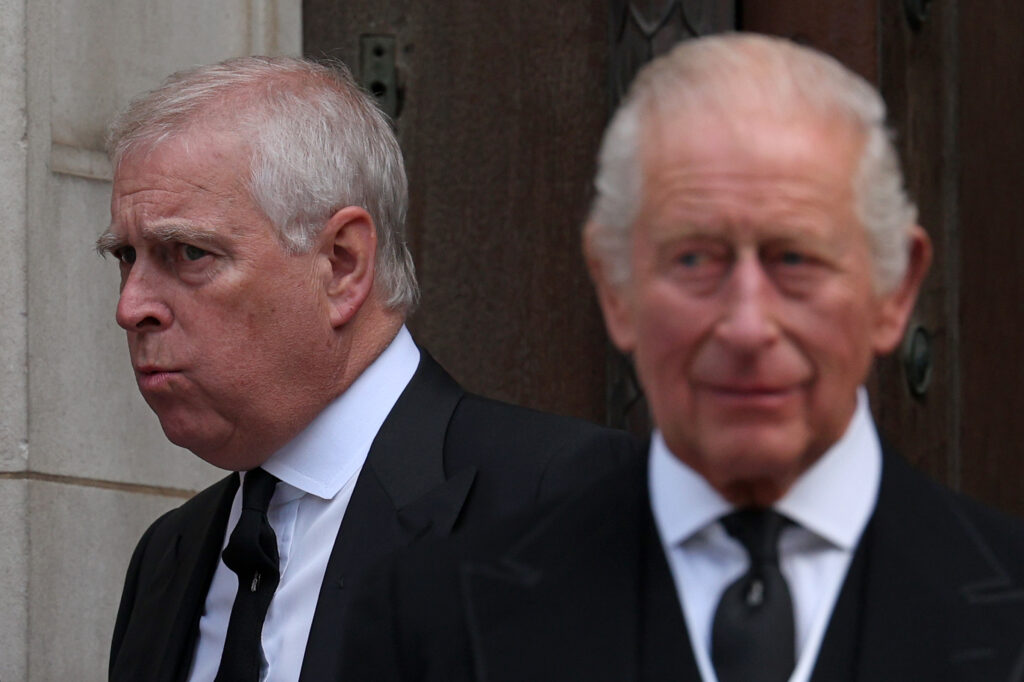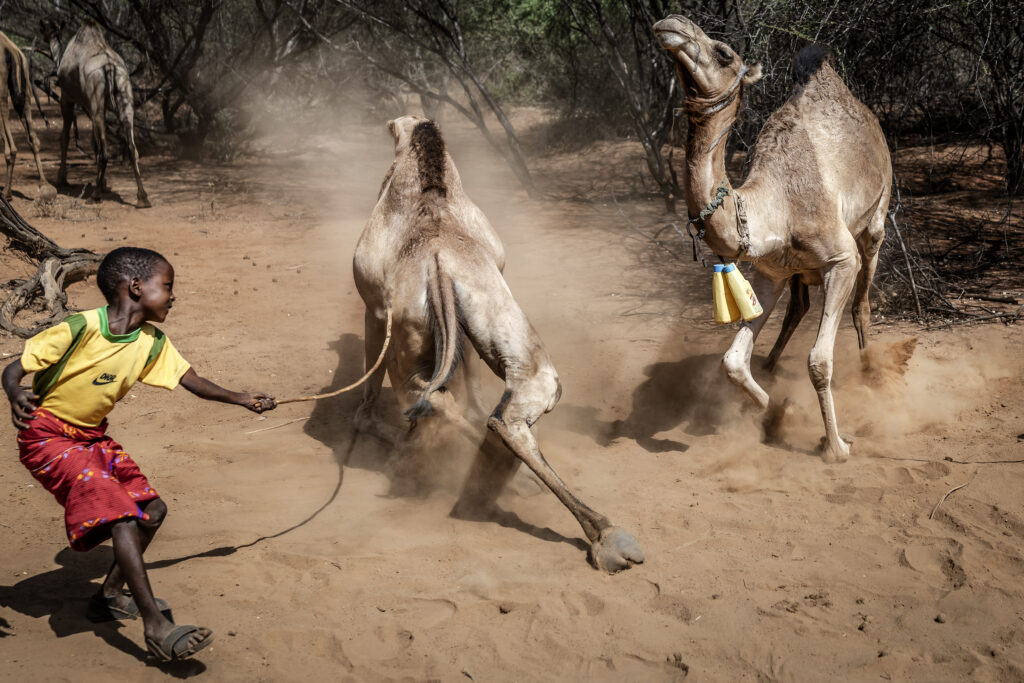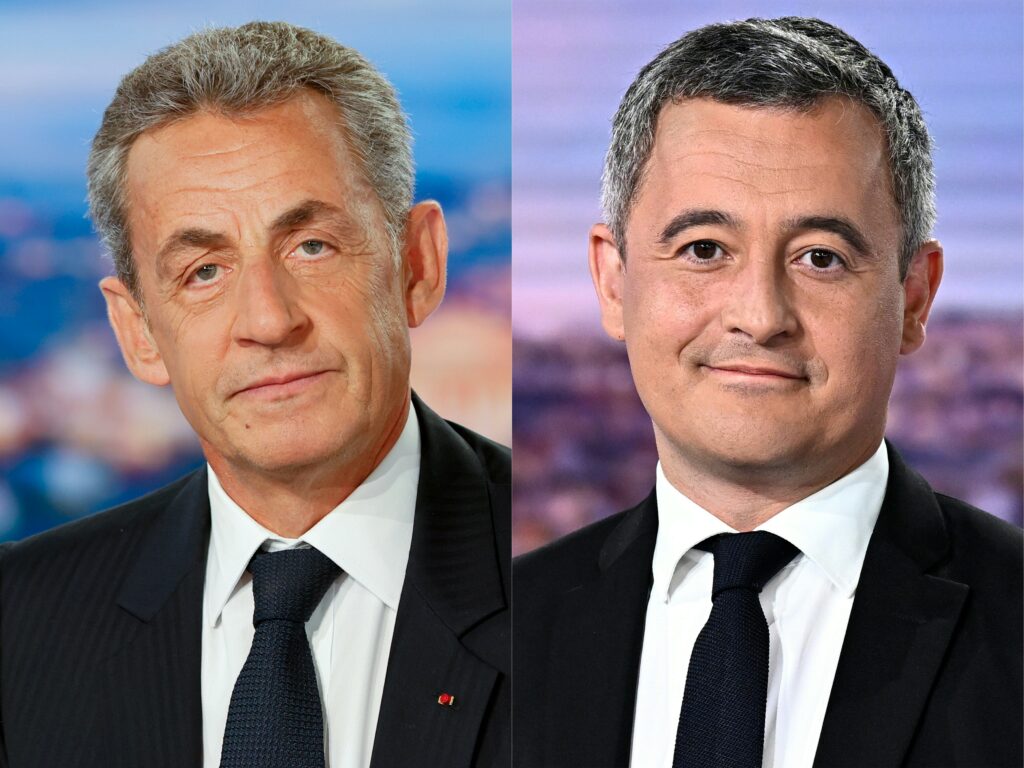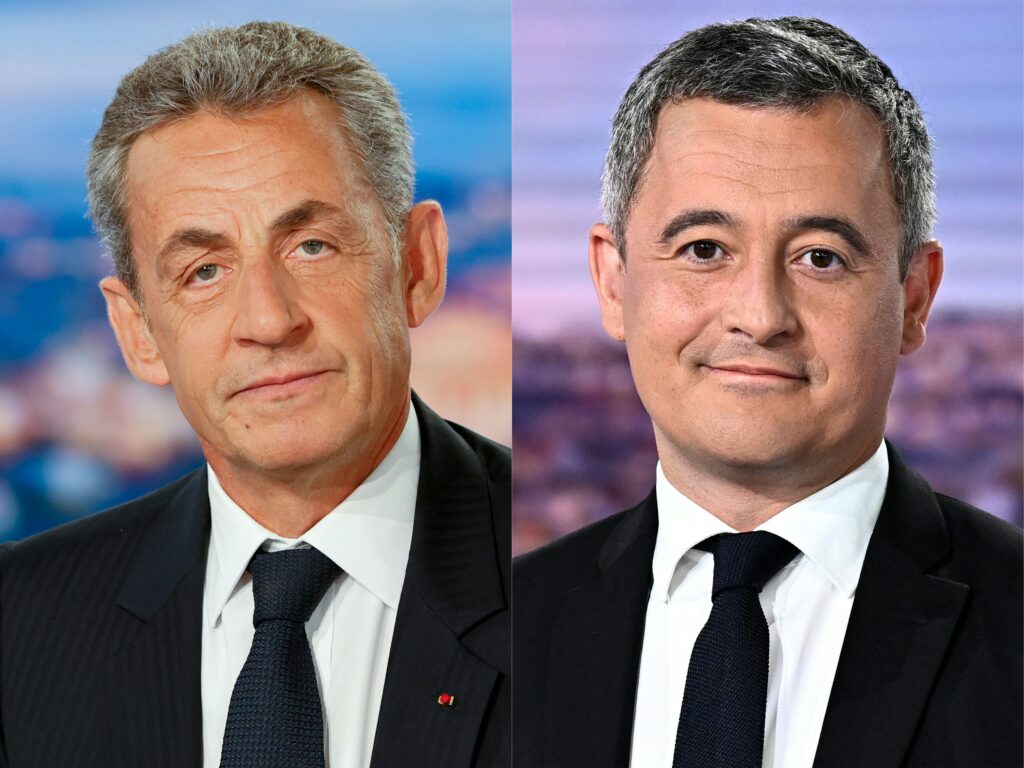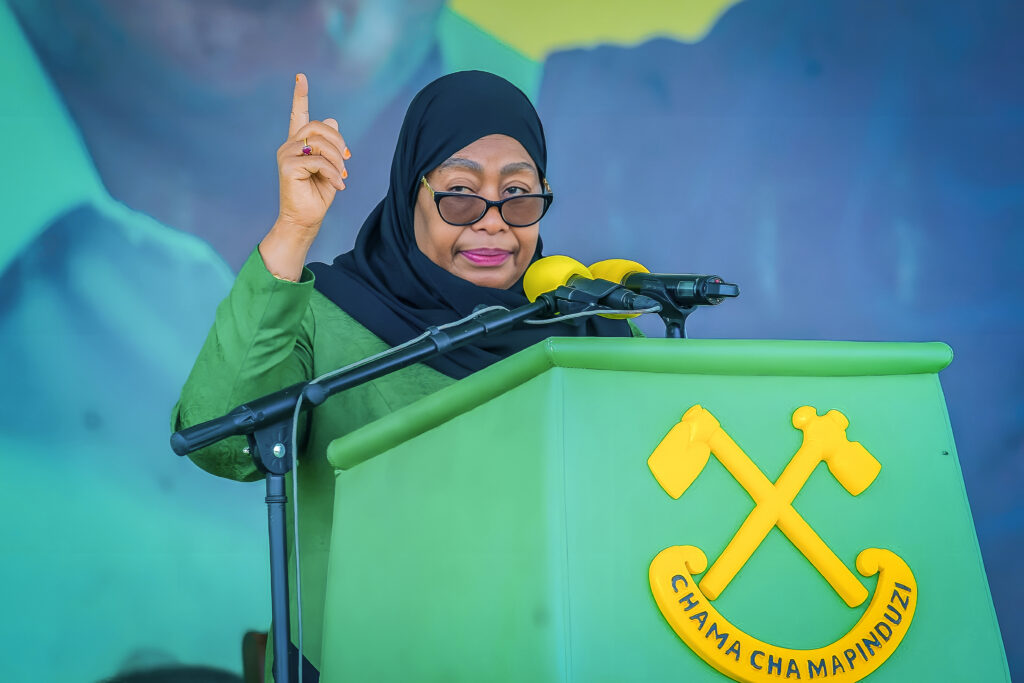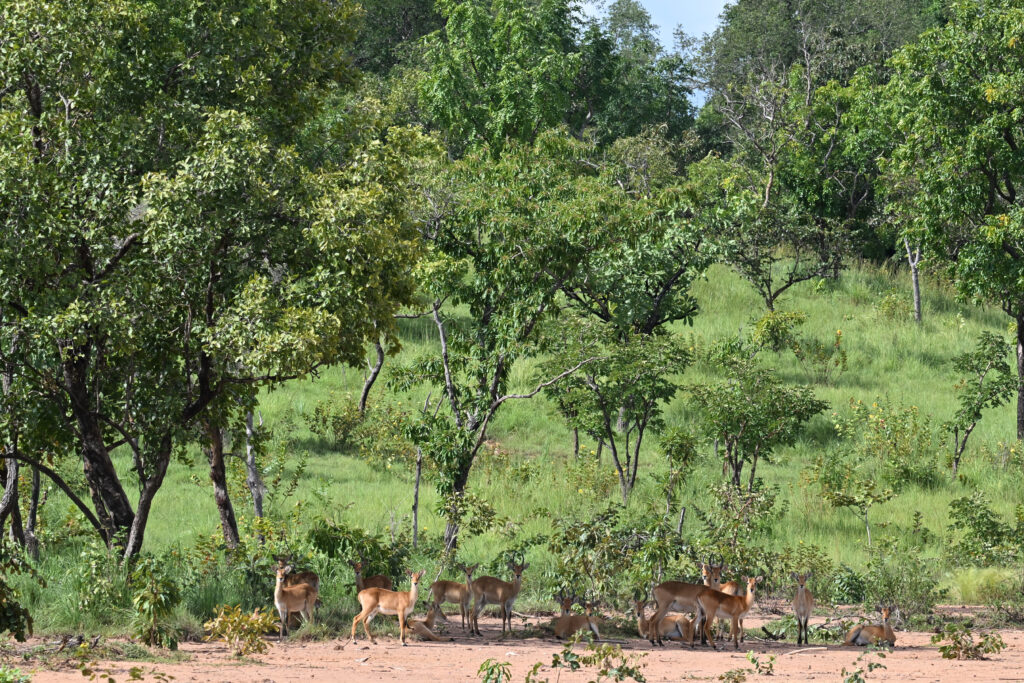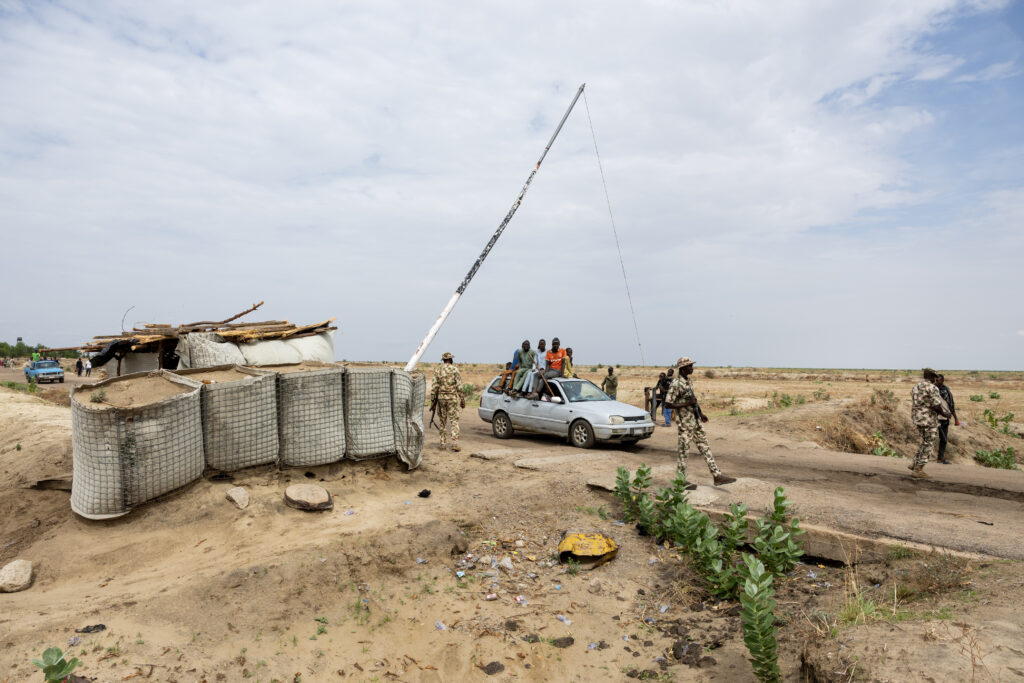Charles III retire ses titres à son frère Andrew, emporté par l’affaire Epstein
Embourbé dans le scandale sans fin de ses relations avec le criminel sexuel américain Jeffrey Epstein, Andrew, frère du souverain britannique Charles III, va perdre son titre de prince et devra quitter son manoir royal, a annoncé jeudi le palais de Buckingham.Le roi a lancé jeudi “un processus formel” pour retirer ses “titres et honneurs” à son frère Andrew, qui sera “désormais connu sous le nom d’Andrew Mountbatten Windsor”, selon communiqué du palais publié jeudi.En outre, le prince déchu devra quitter sa résidence de Royal Lodge, un manoir de 30 pièces situé près du château de Windsor (40 km à l’ouest de Londres). “Un avis formel a été délivré pour (qu’il) renonce au bail, et il va déménager dans un autre logement privé”, poursuit le communiqué.Le deuxième fils de la défunte reine Elizabeth II, âgé de 65 ans, installé avec son ex-épouse Sarah Ferguson dans ce manoir depuis 2003, ira s’installer dans le domaine de Sandringham dans le Norfolk, une résidence privée du souverain britannique située à quelque 180 km au nord-est de Londres.Cette annonce intervient après un énième rebondissement dans le scandale de ses liens avec Jeffrey Epstein, avec la récente sortie des mémoires posthumes explosives de Virginia Giuffre, principale accusatrice du financier et délinquant sexuel américain, qui s’est suicidée en avril 2025.”Aujourd’hui, une fille américaine ordinaire issue d’une famille américaine ordinaire a fait tomber un prince britannique avec sa vérité et son courage extraordinaire”, a salué sa famille dans un communiqué transmis à la BBC dans la foulée de l’annonce de Buckingham.- Duc, comte et chevalier -Le prince William, fils de Charles III et héritier du trône, a été impliqué dans la prise de cette décision, qui isole définitivement celui qui a été le fils préféré d’Elizabeth II, décédée en 2022.Andrew est tombé en disgrâce en raison de sa proximité avec Jeffrey Epstein, pédocriminel américain retrouvé mort dans sa prison en 2019 avant son procès pour crimes sexuels. Il avait déjà été mis à l’écart de la famille royale depuis 2019, mais le scandale n’a cessé de l’entourer depuis. Sous la pression de son frère, il avait renoncé mi-octobre à son titre de duc d’York. Cette renonciation n’équivalait toutefois pas à un retrait formel. Une source au palais de Buckingham précise que la décision de jeudi a exigé du temps et une expertise juridique et constitutionnelle.Outre son titre de prince, Andrew se voit retirer ses titres de duc d’York, comte d’Inverness et baron Killyleagh. Il perd également des distinctions honorifiques prestigieuses parmi lesquelles son titre de chevalier de l’ordre de la Jarretière. Ce dernier lui avait été offert par sa mère en 2006.- Les filles pas concernées -Dans ses mémoires publiées à titre posthume le 21 octobre, Virginia Giuffre maintenait ses accusations contre le prince, expliquant avoir eu trois rapports sexuels contraints avec lui sur demande de Jeffrey Epstein alors qu’elle était sous la coupe de ce dernier.Andrew a toujours nié les faits.Le roi Charles et son épouse Camilla “souhaitent préciser que leurs pensées et leur plus grande sympathie ont été, et resteront, avec les victimes et les survivants de toutes formes d’abus”, est-il écrit dans le communiqué du palais.La pression s’est fait plus grande ces derniers jours avec la publication dans la presse d’une photographie de Jeffrey Epstein, de son amie et complice Ghislaine Maxwell – condamnée à 20 ans de prison en 2022 -, et de l’ex-producteur de cinéma emprisonné pour viol Harvey Weinstein, prise dans les jardins de Royal Lodge à l’occasion du 18e anniversaire de Beatrice, la fille d’Andrew.Et le scandale, impossible à contenir, est perçu comme une menace pour la monarchie.Lundi dernier, en visitant une cathédrale du centre de l’Angleterre, le roi a été bruyamment interpellé par un homme qui lui a lancé: “Depuis combien de temps saviez-vous pour Andrew et Epstein? Avez-vous demandé à la police de le couvrir?”Les deux filles du prince Andrew, les princesses Beatrice et Eugenie, conserveront quant à elles leurs titres.
